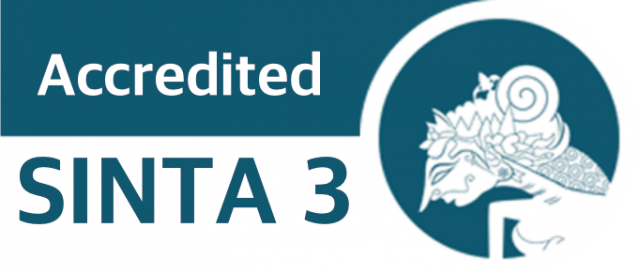Dinamika Budaya dan Ekonomi dalam Perawatan Lansia Ketergantungan pada Masyarakat Minangkabau
DOI:
https://doi.org/10.24114/antro.v10i2.68916Keywords:
lansia ketergantungan, pengobatan modern, pengobatan tradisional, sakit tuaAbstract
The Indonesian government has developed an elderly care program through Posyandu Lansia, a community-based health service at the lowest administrative level. However, this program tends to overlook the cultural and economic dynamics that influence medical treatment for dependent elderly individuals. This article examines the relationship between culture and economy in the medical treatment choices of dependent elderly individuals. The research employs an ethnographic method, collecting data through observations, in-depth interviews, kinship diagrams, and life history analysis. Informants were selected using purposive sampling, consisting of dependent elderly individuals and informal caregivers. The data were analyzed descriptively through case studies of dependent elderly individuals. The findings reveal that elderly medical treatment is carried out simultaneously through both traditional and modern medicine. Dependent elderly individuals are often labeled as suffering from sakit tuo (old-age illness). This term has dual meanings: it refers both to the socioeconomic condition of the elderly, who are no longer able to engage in social and economic activities and therefore require family care, and to the physical and psychological health deterioration that occurs with aging, which is treated using both traditional and modern medicine. Economically disadvantaged dependent elderly individuals can only access medical treatment from midwives and community health centers puskesmas, as these services are relatively low-cost. In contrast, wealthier elderly individuals can afford private medical practitioners and hospital treatment. This disparity makes impoverished elderly individuals more vulnerable in receiving adequate care in the future.References
Badan Pusat Statistik. 2023. Statistik Penduduk Lanjut Usia 2023. BPS.
Erwin. 2005. Tanah Komunal: Memudarya Solidaritas Sosial pada Masyarakat Matrilinial Minangkabau. Universitas Andalas
Emiliana dkk. 2022. Tingkat Kemandirian Lansia Dalam Pemenuhan Activity Daily Living (ADL) di Panti Pemenang Jiwa. Healthcaring: Jurnal Ilmiah Kesehatan, 1(1), 27-35.
Foster, G.M dan Anderson, B.G, 2005. Medical Anthropology. University of Indonesia
Indrizal, Edi, Philip Kreager, and Elisabeth Schroeder-Butterfill. 2008. The Structural Vulnerability of Older People in Matrilineal Society: The Minangkabau of West Sumatra, Indonesia. In The Cultural Context of Aging: Worldwide Perspectives. Second Edition, edited by Jay Sokolovsky, 383–94. Westport, US: Praeger.
Intarti, W.D, Khoriah, S.N. 2018. Faktor-faktor yang Mempengaruhi Pemanfaatan Posyandu Lansia. Journal of Health Studies 2(1):110-22
Kalangie, S. Nico, 1994. Culture and Health Development Primary Health Care Through Sociocultural Approach. University of Indonesia
Kemenkes. 2017. Penyelenggaraan Pelayanan Kesehatan Lanjut Usia di Pusat Kesehatan Masyarakat. Kementrian Kesehatan RI.
Miko, A. 2017. Sosiologi Lansia Pergeseran Pranata Penyantunan Lansia Dalam Keluarga Minangkabau Yang Berubah Di Sumatera Barat. CV.Rumahkayu Pustaka Utama.
Mulyadi, Yulie. 2019. Mulyadi, Y. (2009). Pemanfaatan posyandu lansia di Kota Pariaman. Kesmas, 3(5), 6.
Pandey, Kalangie, 1986. Ethnomedicine in Indonesia. Journal of Anthrpology, Social and Political Science. Univeristy of Indonesia
Schröder-Butterfill, Elisabeth, et al, 2023. Vulnerable, heroic … or invisible? Representations versus realities of later life in Indonesia. Progress in Development Studies, 23 (4), 408–426.
Susanti dkk, 2020. Analisis Faktor Yang Mempengaruhi Rendahnya Partisipasi Lansia Dalam Pemanfaatan Posyandu Lansia Di Puskesmas Pauh Kembar Kabupaten Padang Pariaman Tahun 2019. Human Care Journal, 5(4), 915-926.
Spradley, James. P. 2006. Metode Etnografi. Yogyakarta: Tiara Wacana
Yunarti dkk, 2014. Rationalization of Pain and Illness in Minangkabau Cultural Constellation (Ethnomedicin Study in Agam and Tanah Datar). Journal of Anthropology. University of Indonesia. https://doi.org/10.7454/ai.v35i1.4719
Widyastuti, D., & Ayu, A. (2019). Tingkat ketergantungan lansia berdasarkan usia dan jenis kelamin di Panti Sosial Trsena Werda Nirwana Puri Samarinda. Borneo Nursing Journal (BNJ), 1(1), 1-15.
Zamzami, L. (2010). Peranan Keluarga Matrilineal Minangkabau Terhadap Kesejahteraan Perempuan Lanjut Usia. Sosio Konsepsia, 152-164.
Downloads
Published
How to Cite
Issue
Section
License

This work is licensed under a Creative Commons Attribution 4.0 International License.

This work is licensed under a Creative Commons Attribution 4.0 International License
Authors who publish with this journal agree to the following terms:
- Authors retain copyright and grant the journal right of first publication with the work simultaneously licensed under Creative Commons Attribution 4.0 International License that allows others to share the work with an acknowledgement of the work's authorship and initial publication in this journal.
- Authors are able to enter into separate, additional contractual arrangements for the non-exclusive distribution of the journal's published version of the work (e.g., post it to an institutional repository or publish it in a book), with an acknowledgement of its initial publication in this journal.Penulis.
- Authors are permitted and encouraged to post their work online (e.g., in institutional repositories or on their website) prior to and during the submission process, as it can lead to productive exchanges, as well as earlier and greater citation of published work (Refer to The Effect of Open Access).


